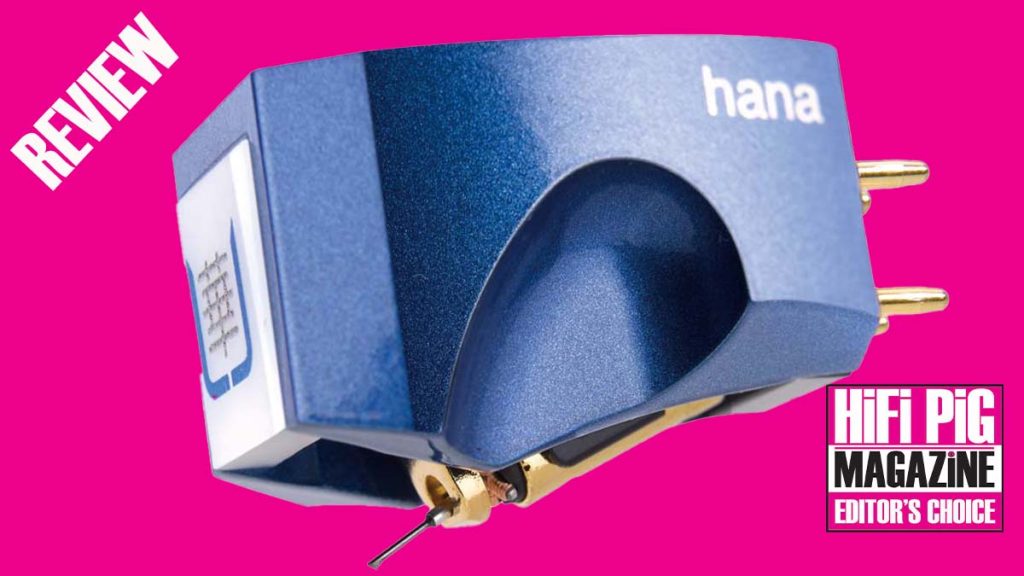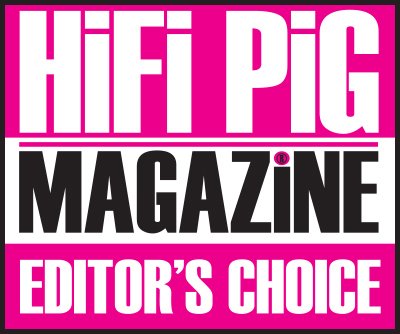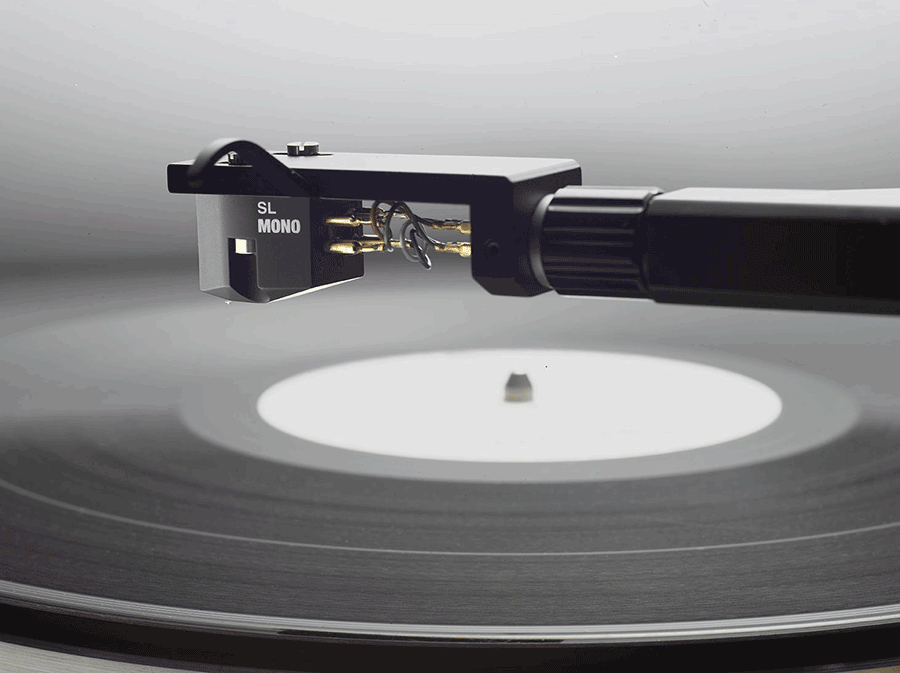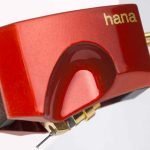HANA UMAMI BLUE CARTRIDGE REVIEW
The HANA UMAMI BLUE moving coil cartridge costs £2149 and is distributed in the UK by Air Audio. HiFi PiG’s reference cartridge is the company’s more expensive RED, so how does this less expensive Blue cartridge stack up?
I’ll not go into detail about the background of the HANA cartridge company as I’d be repeating myself from my review of their UMAMI RED cartridge, but I will pull out a few key details from that review about the company and their history to give a sense of order to this review and not have you switching between the two reviews.
The Hana range of cartridges is made by the Japanese company Excel Sound Corporation. You may not know the name but you will know many of their cartridges as they have been producing cartridges for many other companies for many years. Excel Sound Corporation was founded by Masao Okada-san and he was brought back into the company in 2015 specifically to develop the Hana line of moving coil cartridges and the cartridges are now handmade in Japan.
The Hana website proudly states on its front page that “ HANA means “brilliant and gorgeous” in the Japanese language, “華” Moving coil cartridges by HANA, bestow the most “brilliant and gorgeous” analogue sound for audiophiles and music lovers regardless of their budget”.
I still find the name UMAMI a bit of a weird one to choose for a bit of audio gear given that we normally associate the word with food, it being defined thusly by Merriam-Webster – “the taste sensation that is produced by several amino acids and nucleotides (such as glutamate and aspartate) and has a rich or meaty flavour characteristic of cheese, cooked meat, mushrooms, soy, and ripe tomatoes.” However, like I said in the UMAMI RED review, it’s quite clever as it alludes to something mysterious – something you know what it is when you taste it but hard to put into words exactly what it is.
HANA UMAMI BLUE BUILD AND FEATURES
The simplest way to describe the UMAMI BLUE is that it looks exactly like the UMAMI RED cartridge but it’s blue instead of red, though the finish on the Red is the Urushi Lacquer as opposed to the Blues MTP finish. I am guessing that the Urushi process is significantly more expensive to apply.
It has the same Auricle-shaped (ear-shaped) body design as the RED and is also machined from the same Duralumin material as the RED. Like the RED it has a precision-cut diamond stylus, Boron cantilever, and high-purity copper wires which are combined with the Alnico magnet-based generator from the HANA ML as opposed to the Samarium Cobalt magnet on the RED. There is the same “華” symbol on the front edge of the BLUE but on the RED it is engraved on ebony wood whereas on the BLUE the material is not defined.
I think it’s worth plucking the comments on Duralumin from the HANA RED review as it’s quite an interesting alloy. Duralumin is an aluminium alloy with zinc as the main alloying element which has high strength and resistance fatigue, a factor, no doubt, in why it is used in aircraft structural parts. Its composition for those who care is “5.6–6.1% zinc, 2.1–2.5% magnesium, 1.2–1.6% copper, and less than a half percent of silicon, iron, manganese, titanium, chromium, and other metals.” Thanks, Wiki. Whether you are interested or not I think the main factor here is that the body of the BLUE and the RED UMAMI cartridges is stiff.
From the technical specifications of the two cartridges they are all but identical other than the following:
- Frequency Response on the RED is 10-50KHz as opposed to 15-50KHz on the BLUE
- Coil Impedance on the Blue is 8Ohms/1kHz as opposed to the Red’s 6Oms/1kHz
- Suggested load impedance on the BLUE is greater than 80 Ohms but greater than 60 Ohms on the RED.
- The Blue is .3 of a gram heavier than the Red at 10.8g.
So, to recap, the BLUE on the surface of it looks pretty much identical to the RED other than the colour, the finish, and the generator assembly.

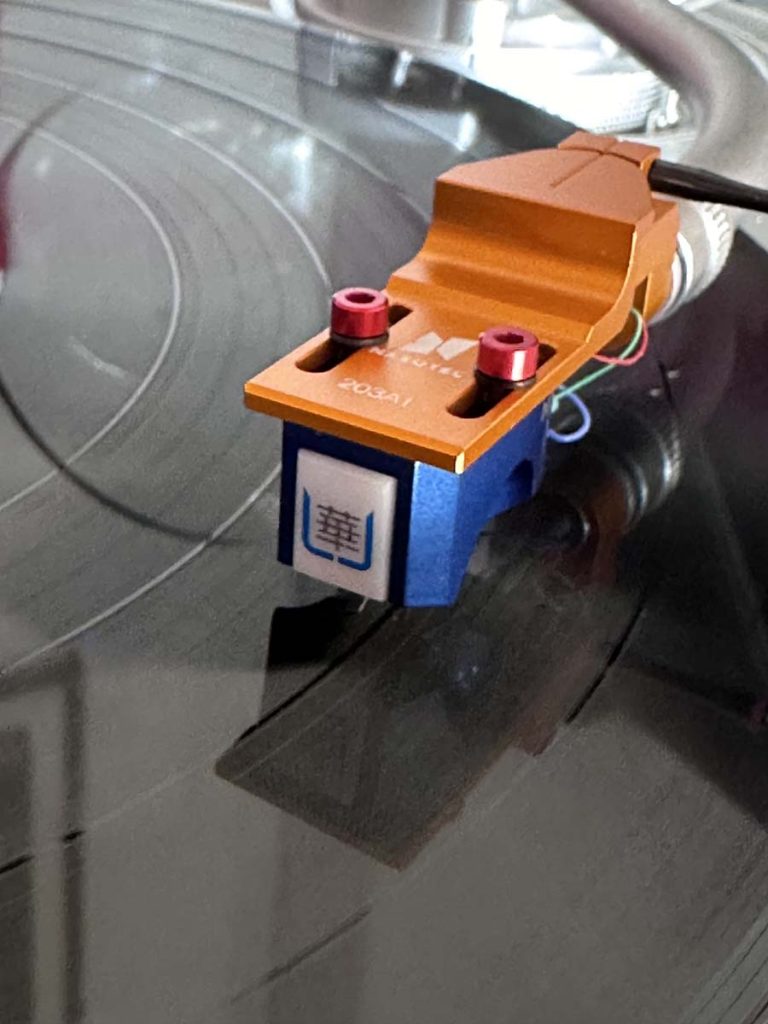
FITTING THE HANA BLUE UMAMI CARTRIDGE
Like the RED the BLUE has a good deal of the cartridge workings exposed so it needs care in fitting, though no more than you should take when fitting any cartridge. For review purposes, I fitted it to a NASOTEC SWING HEADSHELL which is the same as I have the RED fitted. Given that these are going to be put on the Technics 1200G’s arm and are very similar in weight I will be able to swap between the two relatively quickly, with only minor adjustment being needed to the counterweight to allow for the BLUE’s extra 0.3g and a twist of a knob on the phonostage for the impedance loading.
Everything you need for fitting the cartridge comes, as you would expect, in the packaging, which is itself very nice and in keeping with a cartridge costing this amount of money.
LISTENING TO THE HANA BLUE UMAMI
I was very interested in comparing and contrasting these two cartridges and one comment made by my friend Colin suggested that he preferred the less expensive of the two cartridges.
From my extensive listening to the two cartridges side by side the main takeaway is that the two cartridges are VERY similar with, for my taste, the RED being preferable due to ever-so-slightly better data retrieval, making for a very slightly elevated performance with regards to perceived sound-staging and upper-frequency performance. This latter point is demonstrated on tracks such as the effects-heavy dub track Living Dub by Jah Warrior where the RED has a smidge more air around the effects. As I’m writing my notes up I’ve just opened my review of the RED and one of the things I have indeed pulled out is the air around the upper-frequency sounds and instruments.

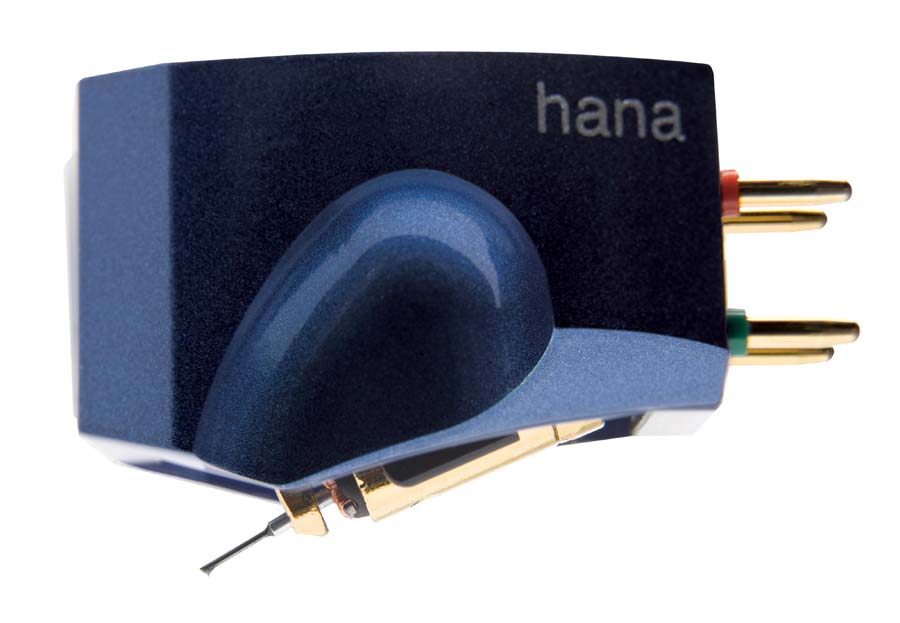
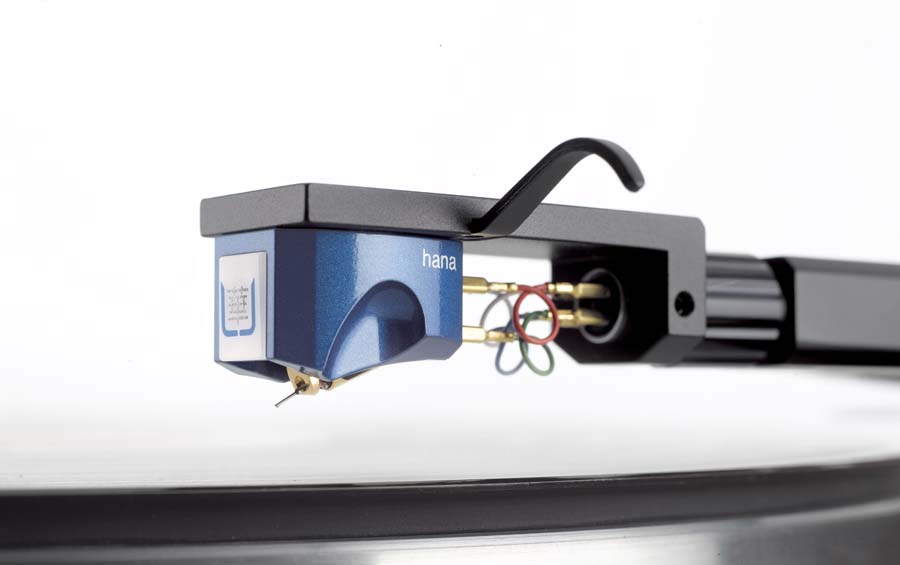
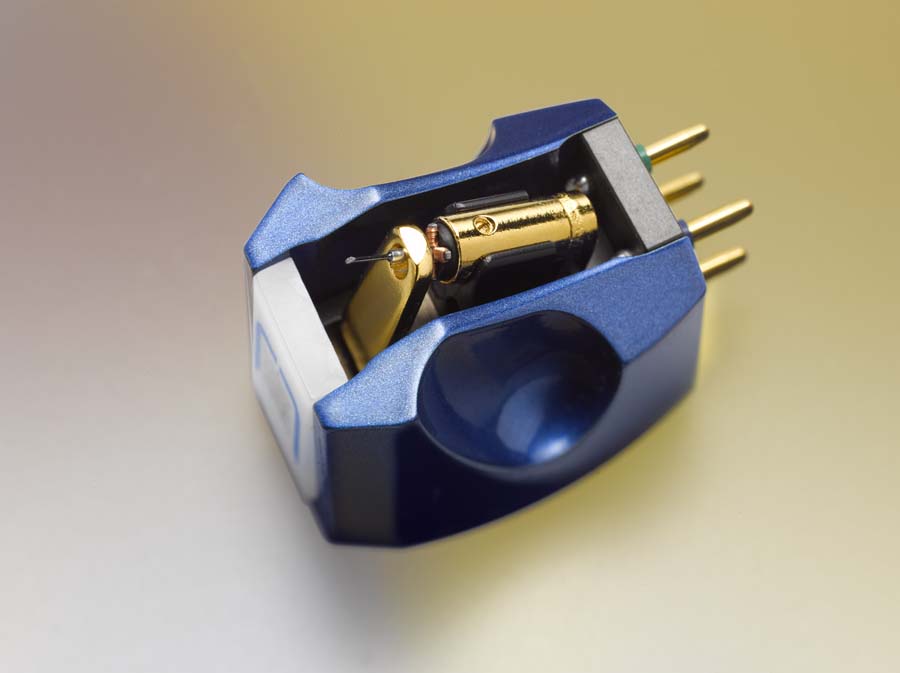
As with the RED, the HANA BLUE deals with the Ortofon test record excellently and tracks perfectly throughout, and just like with the RED this transfers to a sense of underlying stability when listening to real-world records and a sense that there are decidedly no beats being skipped. This sure-footedness, allied with the rock-solid stability of the Technics 1200G leads to a sonic performance when listening to music that is, and for want of repeating myself, absolutely rock-solid. I realise my description here is somewhat lacking, but the sense of rightness is very difficult to convey in words, but when you hear it you will understand what I’m getting at – much like when you taste something umami. Underlying drums and bass that lay the foundations for most records outside the Classical and Ambient realms, sound right and with the correct weight – not too much and not too little. Accurate sounding and engaging is the best way to describe this, I guess.
With regard to midrange and going into the upper bass areas of recordings the two cartridges perform very similarly with a highly detailed but not overwhelming character that is uncoloured and natural sounding. Vocals on both cartridges sound natural with regards to tone and both are equally well isolated in the soundstage. Both allow you to hear small details in vocal performances, be that an artist moving away or towards the microphone and both allow the listener to hear accents and nuances in a singers voice. Perhaps I am imagining it having observed the extra air in the top-end, but there may also be slightly more space around the vocal with the RED, but we are splitting hairs here and this effect may well be the result of that extra air at the top end. This perhaps gives a slight sense of vocals being slightly rounded off with the BLUE when compared directly to the RED. If I sound vague here it’s because the differences I’m talking about are certainly not night and day differences.
NIGGLES
I suppose the cantilever is a bit exposed and so care will be needed, but care needs to be taken with all cartridges and so this niggle is hardly a niggle-worthy niggle.
CONCLUSION
This has not been an easy review to carry out as the similarities between the sonic performances of the RED and BLUE cartridges from HANA far outweigh any glaring differences. There are differences, but they are not night and day and you do have to actively listen to hear them. The main differences to my ears are that slightly more elevated top-end with the RED and (perhaps) this extends to affect the mids and upper-bass too.
So, what we have here is a bit of a dilemma regarding what I would recommend you go and buy if you are in the market for a relatively expensive moving coil cartridge. On the one hand, the £2149 BLUE offers up 95% of what the £3399 RED brings to the party, but the RED is the better cartridge, if only by degrees. You could buy the BLUE, sacrifice that 5% (a stab in the dark figure, obviously) and save a not insubstantial £1250 that could be spent on around 50 averagely-priced LPs. I’m here to give an opinion and my opinion given my proclivity towards the best sound at all (affordable) costs is that I’d buy the RED, but then your take on how this (arbitrary) 5% elevation of performance in the RED can be expressed in terms of a cost-money value may be different. It’s a very tough call and HANA may well have made a bit of a rod for their own back with the BLUE, though my advice is and always has been to get the very best transducers you can afford if ultimate sonic performance is your goal.
Your call!
It is very difficult to fault the HANA BLUE UMAMI when compared to its more expensive sibling, but that sibling is my reference point and so compare I must when it comes to dishing out the award it gets. The RED got our EDITOR’S CHOICE award and not to give the cheaper BLUE the same award would make no sense whatsoever given how little they differ in performance!
Both the RED and the BLUE cartridges from HANA offer you a fantastically detailed and solid performance and both dig deep into the grooves of your records to deliver a very satisfying listening experience.
AT A GLANCE
Build Quality and Features:
Almost identical to the HANA RED but with a less exotic finish
The same ear-shape as the RED
Sound Quality:
An open and detailed sound that also has a rock-solid rhythm section
Slightly less air around the top end when compared to our reference HANA RED
Value For Money:
Not cheap but at £1250 less than the RED I firmly believe the HANA UMAMI BLUE offers excellent value
We Loved:
An open and detailed performance that is genuinely hard to fault
We Didn’t Love So Much:
Not a lot in all honesty
Elevator Pitch Review: The HANA UMAMI BLUE moving coil cartridge looks very similar to the company’s RED cartridge only it’s blue and has a less exotic finish. The BLUE has the Alnico magnet-based generator from the HANA ML as opposed to the Samarium Cobalt magnet on the RED on the inside which leads to a slightly muted top end performance when compared to the RED. Otherwise, the BLUE offers a good deal of the performance of the RED with a saving of £1250.
Price: £2149
Stuart Smith
SUPPLIED BY AIR AUDIO DISTRIBUTION
















































